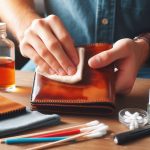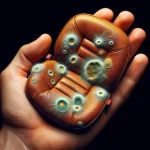So, how to remove chalk marker? Chalk markers are much loved for decorating things, cataloguing them, and even in organizing, presenting a sleek, and colorful substitute to old, white chalk. But anyone and everyone who has used them knows the tussle—occasionally (more like all the time) they just don’t come off as easily as they should, specifically if you used it on an absorbent surface like fabric. So, if you’re marveling on how to remove chalk marker minus the damage to your board or any marks left behind, this is for you. Five actual answers and guidelines to avoid any stains in the future.
Table of Contents
What Makes Chalk Markers Different
Chalk markers are liquid ink tools designed to mimic chalk, minus the dust. They’re water-based and commonly used on non-porous surfaces like glass, metal, plastic, and properly sealed chalkboards. However, unlike chalk sticks, they can seep into porous surfaces and leave behind stubborn stains. Understanding your surface type is key when learning how to remove chalk marker effectively.
Why Chalk Marker Stains Happen
The main issue arises when liquid ink from the marker soaks into porous or unsealed surfaces. Many people mistakenly assume all chalkboards are compatible with these markers, but unseasoned or porous boards can absorb the ink, making removal more difficult. The longer the ink sits, the more it bonds to the surface—another reason why prompt cleaning is crucial.
How to Remove Chalk Marker: 5 Tried-and-Tested Methods
1. Wipe with a Damp Cloth (Best for Fresh Ink)
If you catch the marker early, a simple clean with a damp microfiber cloth or paper towel may be all you need. Gently rub the area—avoid scrubbing aggressively to protect the surface. This works best on non-porous boards or windows.
2. Use a Vinegar and Water Solution
Mix white vinegar and water together but of equal proportions, then dip a soft cloth into the mixture. Wipe the area using small, circular motions. The mild acidity in vinegar helps lift the pigment without harsh chemicals. This is a safe method for most surfaces and a common go-to for those learning how to remove chalk marker naturally.
3. Try a Melamine Eraser (Magic Eraser)
For marks that don’t budge, a damp melamine foam eraser works wonders. Its fine abrasiveness lifts embedded ink without harsh chemicals. Light pressure is key—pressing too hard can wear down delicate surfaces.
4. Use Rubbing Alcohol or Glass Cleaner
Apply a small amount of rubbing alcohol or ammonia-based glass cleaner to a soft cloth and gently clean the affected area. This specific style is ideal for glass, mirrors, or metal, where marker ink tends to sit on the surface rather than absorb. Avoid using alcohol on painted chalkboards unless you’ve tested it on a small spot.
5. Rinse and Dry Thoroughly
Once the marker is removed, rinse the board with fresh water to get rid any residue from vinegar, alcohol, or cleaner. Dry with a soft fabric cloth so that there won’t be any streaks or water spots.
Preventing Chalk Marker Stains: What You Should Know
Knowing how to remove chalk marker is great, but preventing stains in the first place saves time and effort. Here’s how:
- Season Your Chalkboard First: Rub a traditional chalk stick over the entire board, then erase. This fills in porous gaps and acts as a buffer layer, making future cleanup easier.
- Test Before You Write: Always test a small corner of your board before writing a full message or design. If the ink stains or doesn’t wipe off easily, your surface is likely porous.
- Use Non-Porous Surfaces: Stick to glass, metal, plastic, or sealed chalkboards. Chalk markers were made for smooth surfaces—porous ones absorb and trap ink.
- Don’t Let Ink Sit Too Long: Clean your designs regularly. Letting ink stay on the board for weeks increases the chance of staining.
- Apply a Clear Sealant: For unsealed boards, use a clear chalkboard sealant spray. This creates a protective layer and helps future ink wipe off easily.
Other Surfaces: Special Considerations
Chalk markers aren’t just used on chalkboards. Here’s how to remove chalk marker from other popular surfaces:
- Glass & Mirrors: Use a glass cleaner or rubbing alcohol for streak-free removal.
- Plastic: Mild soap and water usually suffice.
- Dry Erase Boards: Markers wipe off easily—perfect compatibility.
- Paper or Fabric: These are generally not suitable for chalk markers. If stained, rubbing alcohol or hairspray may help fade the ink, but results vary.
- Wood or Concrete: These absorb ink quickly. If used, removal may require sanding or painting over the mark.
Frequently Asked Questions
Are chalk markers permanent?
Most are not, but they can act permanent on porous surfaces.
How do I know if my surface is non-porous?
Drip a little water on it—if it beads up, it’s non-porous. If it soaks in, it’s porous.
Can I erase chalk marker with regular chalkboard erasers?
Usually not. Liquid ink needs moisture or a cleaning agent to lift.
What if my marker tip dries out?
Soak the tip in warm water and gently press it down a few times to reactivate the ink.
Do I need to re-season my board after every cleaning?
Not really, but re-seasoning your board can keep it safe it from any and every damage.
Final Thoughts
Whether you’re creating menu boards, DIY signs, or leaving notes around the house, chalk markers are versatile tools—when used correctly. Understanding how to remove chalk marker and how to prevent stains makes them even more enjoyable. Use the right cleaning method, prep your surfaces, and you’ll avoid frustrating ghost marks for good.



